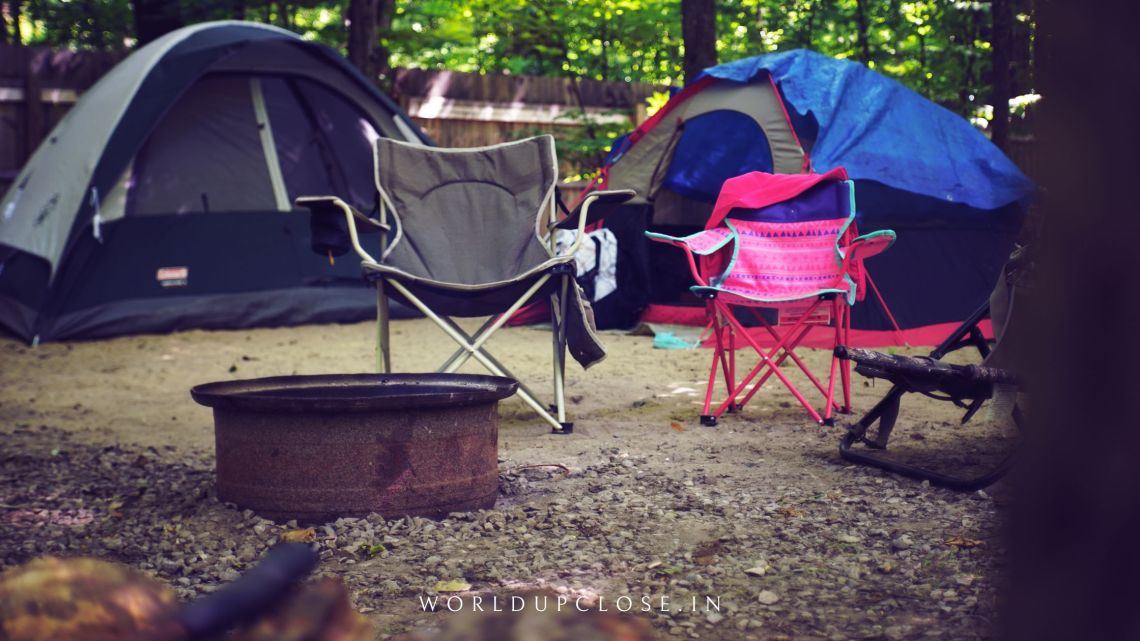
How to Set Up a Comfortable Camp
Are you looking for quick tips on how to set up a comfortable camp? Setting up a comfortable campsite is essential for enjoying your time in nature. Whether you are an experienced camper or new to the game, there are always new tips and tricks to learn.
The anticipation of setting up camp in the great outdoors is always an exciting experience. The smell of pine trees, the sound of crackling firewood, and the feeling of fresh air on your face create a sense of freedom that can’t be replicated anywhere else.
As you begin to unpack your gear and pitch your tent, take a moment to appreciate the simplicity and beauty of nature surrounding you. This is your chance to disconnect from the hustle and bustle of everyday life and truly immerse yourself in the present moment.
Setting up camp is not just about pitching your tent and laying out your sleeping bag, it’s about creating a space that feels like home away from home. From choosing the perfect spot to setting up comfortable seating areas and organizing your gear efficiently, every detail matters when it comes to making your campsite feel inviting and relaxing. So, here are some ideas that you should follow, may be it helps.
How to set up a comfortable camp
Choose the Right Campsite
Choosing the right campsite is crucial for a comfortable outdoor experience. When selecting a campsite, think about the activities you plan on doing during your stay. Are you looking to fish by the river or hike through scenic trails? Choose a location that aligns with your interests and desired experiences. Take into account the weather conditions in the area as well.
Consider the terrain and surroundings. A flat, level ground free of rocks, roots, and debris is ideal for pitching your tent. Avoid setting up camp in low-lying areas prone to flooding or exposed spots vulnerable to strong winds. Being mindful of these details will ensure a safer and more enjoyable camping trip. One important aspect to think about is proximity to water sources.
Having easy access to a lake or stream can provide endless entertainment and convenience for cooking and cleaning during your stay. Depending on your camping style and preferences, you may opt for a remote, secluded location or a campsite closer to facilities such as restrooms, water sources, and hiking trails.
Accessibility considerations include the ease of reaching the campsite with your gear, proximity to parking areas, and the availability of designated campsites versus dispersed camping areas. Balancing solitude with convenience is key to selecting a campsite that meets your needs while ensuring a comfortable and hassle-free experience.
You must be mindful of local regulations and guidelines regarding campfires, wildlife encounters, and Leave No Trace principles to minimize your environmental impact and promote responsible outdoor recreation.
Another yet important thing that you must consider while choosing the campsite for a comfortable camp is a location that offers adequate shade and protection from extreme temperatures, strong winds, and inclement weather.
By considering factors such as terrain, surroundings, accessibility, safety, environmental impact, and weather conditions, you can select a campsite that meets your needs while maximizing comfort, convenience, and overall enjoyment of the great outdoors.
Pitch Your Tent Properly
When it comes to pitching your tent properly, attention to detail is key. Start by selecting a flat and level area free of rocks and roots to avoid any discomfort while sleeping. Once you have chosen the perfect spot, unpack your tent and lay out all the components. Familiarize yourself with the tent’s design, including the poles, rainfly, and ground stakes.
Begin by assembling the tent poles according to the manufacturer’s instructions, making sure to insert each pole into the corresponding sleeve or grommet. Follow the instructions carefully and ensure that all poles are inserted correctly to avoid any structural issues later on. drape the rainfly over the assembled tent frame, ensuring that it covers the entire tent body and aligns with the doors and windows.
Secure the rainfly in place by attaching it to the tent poles and fastening the guy lines to nearby anchor points, such as trees or rocks. Use a hammer to drive the stakes securely into the ground at a slight angle, ensuring that they are firmly anchored and won’t come loose during the night.
Taking the time to pitch your tent properly at the beginning of your camping trip can save you from headaches later on. Adjust the positioning of the tent as needed to maximize airflow and ventilation while minimizing exposure to wind and weather.
Finally, zip up the tent doors and windows to keep bugs and insects out, and lay down a ground tarp or footprint to protect the tent floor from moisture and abrasion. Double-check that there are no gaps or tears in the fabric. Take care when entering and exiting your tent to avoid tracking dirt inside. Keep shoes outside or in a designated area within the vestibule.
Consider adding some personal touches to make your camp feel like home. Hang string lights inside or outside of your tent for a cozy ambiance, bring along comfortable bedding and pillows, and a pack of few extra blankets for chilly nights.

Arrange Your Sleeping Area
The key to a good night’s sleep while camping is making sure your sleeping area is comfortable and inviting. After a long day of exploring and adventuring, having a cozy spot to rest your head can make all the difference in how well you sleep.
After setting up the tent securely, inside the tent, lay down a tarp or groundsheet to protect against moisture seeping in from below. Place your sleeping pad on top of this for added insulation and cushioning. Arrange your sleeping bag or blankets on top of the sleeping pad, ensuring they are clean and dry for a cozy night’s sleep.
Organize your personal belongings and gear along the sides of the tent to maximize space and keep them easily accessible. As for your bedding, choose a warm sleeping bag appropriate for the temperature you’ll be facing at night. Consider bringing along an extra blanket or two if temperatures drop unexpectedly.
Ensure proper ventilation and airflow inside the tent by keeping the tent doors and windows partially open. This helps prevent condensation and keeps the interior of the tent fresh. Position the tent doors and windows away from prevailing winds to minimize drafts and maintain a comfortable temperature inside the tent.
For lighting and ambiance, use a headlamp, lantern, or camping light to illuminate the interior of the tent after dark, making it easier to navigate and perform tasks. Consider bringing battery-operated string lights or LED candles to create a cozy and inviting ambiance inside the tent.
Ensure you wear comfortable sleepwear and keep essential items such as water, snacks, and a flashlight within easy reach in case you need them during the night.

Create a Cozy Seating Area
Creating a cozy seating area is essential for setting up a comfortable campsite where you can relax, unwind, and enjoy the outdoors. You could start by choosing a durable yet comfortable seating option, once you have chosen the perfect spot, gather your seating options. Bring lightweight and portable chairs, stools, or cushions that are easy to set up and move around.
Consider investing in camping chairs. To enhance the ambiance, incorporate some outdoor lighting such as string lights or lanterns for those cozy evening gatherings around the campfire. You must bring along a small side table for drinks and snacks, making your seating area functional as well.
The key to creating a cozy seating area is to personalize it with your own touch, you could do that by enhancing the comfort and ambiance of your seating area by adding cozy touches such as outdoor rugs, blankets, or throw pillows. Place a durable and weather-resistant rug or mat on the ground to define the seating area and provide insulation from the cold or damp ground.
Choose blankets made from soft and insulating materials like fleece or wool that can withstand outdoor conditions and provide extra warmth when needed. Opt for lightweight and collapsible options that are easy to transport and set up.
You can also Bring along a portable speaker or music player to enjoy your favorite tunes while you lounge and socialize with friends and family. No matter how you choose to design your little oasis in the wilderness, ensure it reflects your unique style and provides comfort during your camping experience.

Set Up Cooking and Dining Areas
When preparing for a camping trip, one of the most important aspects to consider is setting up your cooking and dining areas. These spaces will not only provide you with nourishment but also serve as central gathering spots for socializing and enjoying meals together.
Consider bringing a portable table or workbench to create additional space for cooking utensils, condiments, and ingredients. Consider investing in a portable camping stove or grill for convenience. If inside your tent, there is an ample of space, you can set up a separate space nearby for dining.
Or, set up a folding chair near your tent and create ambiance by hanging string lights or lanterns above the dining area to provide lighting once the sun sets. You must not forget to bring along reusable plates, utensils, and cups to minimize waste and reduce your impact on the environment.
Create a Relaxation Zone
Creating a relaxation zone in your tent is essential for ensuring a comfortable stay while camping. Choose a corner or section of your tent that offers sufficient space and privacy for relaxation. Lay down a soft blanket or ground mat to provide a comfortable seating area.
This not only adds cushioning but also helps insulate against the cold ground, creating a cozy atmosphere inside the tent. Opt for portable and lightweight camping chairs, inflatable loungers, or foldable stools to create comfortable seating options.
Alternatively, you can use waterproof cushions or padded blankets for sitting directly on the ground. Enhance the ambiance of your relaxation zone by adding personal touches and decorative elements. Hang battery-powered string lights or lanterns from the tent ceiling to create a warm and inviting glow.
Bring along throw pillows, blankets, or rugs in your favorite colors and patterns to add coziness and style to the space. Consider bringing along a portable Bluetooth speaker so you can listen to music or soothing sounds while you relax.
And no relaxation zone is complete without some good books, puzzles, or games to keep you entertained during downtime. You could also bring along some soothing elements such as essential oils, candles, or incense to help you unwind after a long day of hiking and exploring.

Organize Storage and Gear
Organizing storage and gear within your tent is essential for ensuring a comfortable and hassle-free camping experience. Most modern tents come equipped with built-in storage pockets and organizers. Take advantage of these features to store small items such as flashlights, keys, and electronics.
Hang lightweight organizers from the tent walls or ceiling to keep essentials within reach while maximizing floor space. This will free up floor space and prevent clutter from accumulating. Invest in collapsible storage containers or bags that can be easily packed away when not in use. These versatile options come in handy for keeping clothes, shoes, and other bulky items neatly stored.
Invest in clear plastic bins or containers to store larger items such as camping gear, cooking utensils, and food supplies. Transparent containers allow you to see the contents at a glance, making it easier to find what you need without rummaging through multiple containers. Label the bins for added convenience, especially if you’re camping with a group or family members.
Make use of the vertical space within the tent by hanging gear from the ceiling or walls. Install gear loft attachments or overhead storage nets to hang items like clothing, sleeping bags, and shoes. Hang a small mesh laundry bag or hook inside the tent to store dirty clothes and prevent them from mixing with clean garments.
Use a compact toiletry bag to store personal hygiene products and keep them neatly organized. By keeping everything in its place, you will be able to relax and enjoy your time in nature without feeling overwhelmed by mess and chaos.
Consider Privacy and Security
When considering privacy and security in the tent for a comfortable stay, several factors should be taken into account to ensure a relaxing camping experience. Select a campsite that offers natural barriers or seclusion, such as dense vegetation or natural formations, to enhance privacy.
Position the tent away from high-traffic areas and neighboring campsites to minimize noise and disturbances. Choosing a secluded campsite away from other campers will give you the peace and quiet you desire during your stay.
For security, always lock your tent when leaving it unattended to prevent theft of valuable belongings. Consider investing in a sturdy padlock or even a small safe to keep your items secure while you are out exploring nature. It is also important to be mindful of where you place your tent, avoid setting up near cliffs or bodies of water that could pose safety risks.
Develop a system for checking in with each other regularly and establish designated meeting points in case of emergencies. Encourage campers to report any suspicious activity or concerns to designated leaders or campground staff promptly. By prioritizing privacy and security in the tent, campers can enjoy a comfortable and worry-free camping experience.




